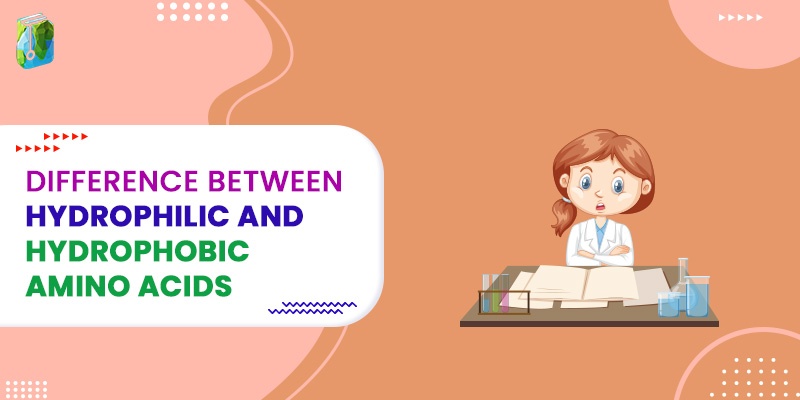When we talk about amino acids, we consider them the foundation of proteins. Protein is a polymer molecule that is vital for all living organisms on Earth.
Now, amino acids are bifurcated into two categories namely:
- Essential amino acids
- Non-essential acids
Furthermore, based on their physicochemical nature, they are further divided into two sections:
- Hydrophobic Amino Acids
- Hydrophilic Amino Acid
The key factor of their difference is polarity!
Let’s understand these two terms in detail.
Difference Between Hydrophobic and Hydrophilic Amino Acids
What is Hydrophobic Amino Acid?
Hydrophobic amino acids are nonpolar, and the word ‘hydrophobic’ implies that they do not interact with water, which is known as a polar solvent. As you just read, the hydrophobic amino acids are nonpolar, so they are unable to dissolve in water.
These compounds have side chains in their chemical structure, which is responsible for their hydrophobic nature. Let us elaborately analyze this structure.
The generic formula of amino acid has a central carbon atom associated with a hydrogen atom, an amine group, a carboxyl group, and a side group (R group). The R group here is a long side chain or a hydrogen atom. The chain becomes hydrophobic if it is exceptionally long and has carbon and hydrogen atoms.
Moreover, they also have small dipole moments that repel water.
Here is a list of such acids. Take a look:
- Glycine
- Isoleucine
- Leucine
- Valine
- Alanine
- Methionine
- Tryptophan
- Phenylalanine
- Proline
What is Hydrophilic Amino Acid?
Hydrophilic amino acids are polar. The term ‘hydrophilic’ implies that they attract water. As water is a polar solvent, these kinds of acids can easily dissolve in water.
Hydrophilic amino acids have side chains with the hydrophilic groups. Further it has large dipole moments.
Therefore, they attract water.
Here are some examples of hydrophilic amino acids:
- Serine
- Glutamine
- Asparagine
- Cysteine
- Tyrosine
- Threonine
Key differences between hydrophobic and hydrophilic amino acids
The key differences between the two are tabulated as below:
| Hydrophobic Amino Acids | Hydrophilic Amino Acids | |
| Polarity | Non-Polar | Polar |
| Dipole Moment | Small | Large |
| Side Chain | Long side chains with hydrogen and carbon atoms | Short side chains with hydrophilic groups |
| Interaction with water | Repels | Attracts |
| Occurrence on protein | At the center | On the surface |
Conclusion
As you can understand, there are several points of difference between these two kinds of amino acids. On one hand, hydrophobic amino acid repels water and is nonpolar in nature. Hydrophilic amino acid attracts water and is polar in nature.
We hope that the information provided in the article helped you to understand the topic in detail.
Good luck with all your future endeavors!
People are also reading:

